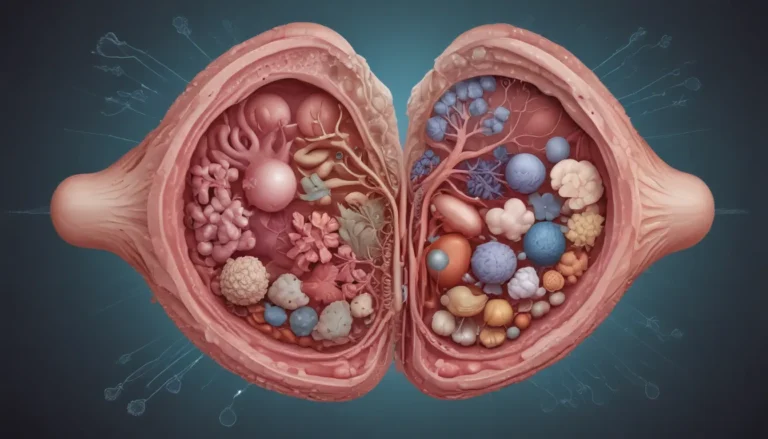A Note About Images: The images used in our articles are for illustration purposes only and may not exactly match the content. They are meant to engage readers, but the text should be relied upon for accurate information.
Transcriptional regulation is a captivating process that governs how genes are expressed in living organisms, playing a crucial role in various biological functions. By understanding the intricacies of transcriptional regulation, we can gain insights into development, growth, and disease. In this comprehensive guide, we will explore 15 enigmatic facts about transcriptional regulation that shed light on its complexity and significance in shaping the biology of life.
The Intricate Dance of Gene Expression
Transcriptional regulation is a fundamental mechanism by which cells control the production of proteins from their genes. It involves a series of intricate steps where transcription factors interact with specific DNA sequences to modulate the activity of RNA polymerase. This process ultimately determines which genes are expressed and to what extent, highlighting its essential role in cellular function.
Guiding Development and Cellular Differentiation
During embryonic development, transcriptional regulation is crucial for ensuring the differentiation of cells into specialized types, such as neurons, muscle cells, and blood cells. By orchestrating the expression of the right genes at the right time and in the right cells, transcriptional regulation allows for proper development and function to occur seamlessly.
Responding to External and Internal Cues
Environmental factors, such as temperature, light, and nutrients, can influence transcriptional regulation, as can internal factors like hormones and signaling molecules. These external and internal cues can impact gene expression patterns, highlighting the dynamic nature of transcriptional regulation in response to changing conditions.
Unveiling the Role of Transcription Factors
DNA-binding transcription factors play a pivotal role in the regulation of gene expression. These proteins interact with specific DNA sequences to control the transcription of nearby genes, acting as key players in determining whether a gene is activated or repressed. The intricate interplay of transcription factors adds a layer of complexity to transcriptional regulation.
The Significance of Enhancers and Promoters
Enhancers and promoters are essential elements in transcriptional regulation, serving as key regulatory sequences that modulate gene expression. Enhancers, located distally from the genes they regulate, interact with transcription factors to initiate gene expression. In contrast, promoters, situated near the transcription start site, serve as binding sites for transcription factors and RNA polymerase.
Epigenetic Modifications: Fine-Tuning Gene Expression
Epigenetic modifications, such as DNA methylation and histone modifications, can profoundly impact transcriptional regulation. By altering the accessibility of DNA to transcription factors and RNA polymerase, these modifications act as molecular switches that can turn genes on or off, shaping gene expression patterns in a dynamic and precise manner.
The Dynamic Stages of Transcription Regulation
Transcriptional regulation occurs at various stages of gene expression, including initiation, elongation, and termination. Each stage involves specific factors and mechanisms that work together to ensure precise control over gene expression, highlighting the complexity and precision of transcriptional regulation.
Genetic Variations and Transcriptional Regulation
Genetic variations within DNA sequences can influence transcriptional regulation by affecting the binding affinity of transcription factors or the structure of regulatory elements. These variations can alter gene expression patterns, contributing to phenotypic diversity and disease susceptibility in individuals.
Tissue-Specific Gene Expression
Tissue-specificity in gene expression is governed by tissue-specific transcription factors and regulatory elements. This specificity allows for precise control over gene expression in different tissues and cell types, highlighting the importance of transcriptional regulation in shaping the diversity of cellular functions and identities.
Adapting to Stress and Stimuli
Transcriptional regulation plays a critical role in cellular responses to stress and stimuli, allowing cells to activate or repress specific genes in response to changing environmental conditions. This adaptive mechanism ensures the survival and proper functioning of cells under diverse challenges.
The Influence of Non-Coding RNAs
Non-coding RNAs, such as microRNAs and long non-coding RNAs, contribute to transcriptional regulation by interacting with transcripts and modulating their stability or translation efficiency. These non-coding RNAs add another layer of complexity to gene expression regulation, showcasing the multifaceted nature of transcriptional control.
Beyond Protein-Coding Genes
While much attention has been focused on protein-coding genes, non-coding RNAs and regulatory elements within non-coding regions also play significant roles in transcriptional regulation. These elements contribute to diverse regulatory mechanisms that expand the complexity of gene expression control beyond traditional protein-coding genes.
Interconnected Cellular Processes
Transcriptional regulation is intricately interconnected with other cellular processes, such as DNA replication, repair, chromatin organization, and post-transcriptional modifications. These processes work in harmony to ensure accurate and efficient gene expression, highlighting the integrated nature of cellular functions.
Implications for Disease
Dysregulation of transcriptional regulation can lead to the development of various diseases, including cancer, metabolic disorders, and neurological conditions. Understanding the underlying mechanisms of dysregulation is essential for developing targeted therapies that can restore proper gene expression patterns and mitigate disease progression.
The Evolution of Transcriptional Regulation Research
Advancements in technology, such as high-throughput sequencing and genome editing techniques, have revolutionized the study of transcriptional regulation. Scientists continue to make groundbreaking discoveries that uncover new insights into the complexities of gene regulation, paving the way for future advancements in therapeutic interventions and biomedical research.
Embracing the Complexity of Transcriptional Regulation
In conclusion, transcriptional regulation offers a fascinating glimpse into the intricate world of gene expression control. From the involvement of transcription factors and epigenetic modifications to the role of non-coding RNAs and genetic variations, each facet of transcriptional regulation contributes to the diversity and precision of gene expression in living organisms. By unraveling the mysteries of this regulatory process, scientists can gain profound insights into disease mechanisms, therapeutic targets, and the potential for innovation in biotechnology.
FAQs
What is transcriptional regulation?
Transcriptional regulation refers to the process by which gene expression is controlled, involving a complex interplay of factors and mechanisms that determine whether a gene is transcribed or not.
Who are transcription factors?
Transcription factors are proteins that bind to specific DNA sequences and regulate the transcription of genes, playing a crucial role in controlling when and how genes are expressed.
How do enhancers and silencers function?
Enhancers and silencers are DNA sequences that can enhance or inhibit gene expression, respectively. These regulatory elements interact with transcription factors to modulate the activity of promoters and control gene transcription.
Can dysregulation of transcriptional regulation contribute to diseases?
Yes, disruptions in transcriptional regulation can lead to various diseases by causing aberrant gene expression patterns that affect cellular functions. Dysregulated gene expression is linked to conditions such as cancer, genetic disorders, and metabolic diseases.
What techniques are used to study transcriptional regulation?
Scientists utilize a range of techniques, including chromatin immunoprecipitation (ChIP), reporter gene assays, and next-generation sequencing, to investigate transcriptional regulation. These methods enable researchers to uncover the intricate interactions between regulatory elements and gene expression machinery.
Uncover the complexities of transcriptional regulation and delve into the fascinating world of gene expression control. By exploring the diverse mechanisms and remarkable features of this essential biological process, you can gain valuable insights into the inner workings of cellular functions and the impact of gene regulation on health and disease. Embrace the enigmatic nature of transcriptional regulation as you unravel its mysteries and discover the intricacies of life’s fundamental building blocks.






